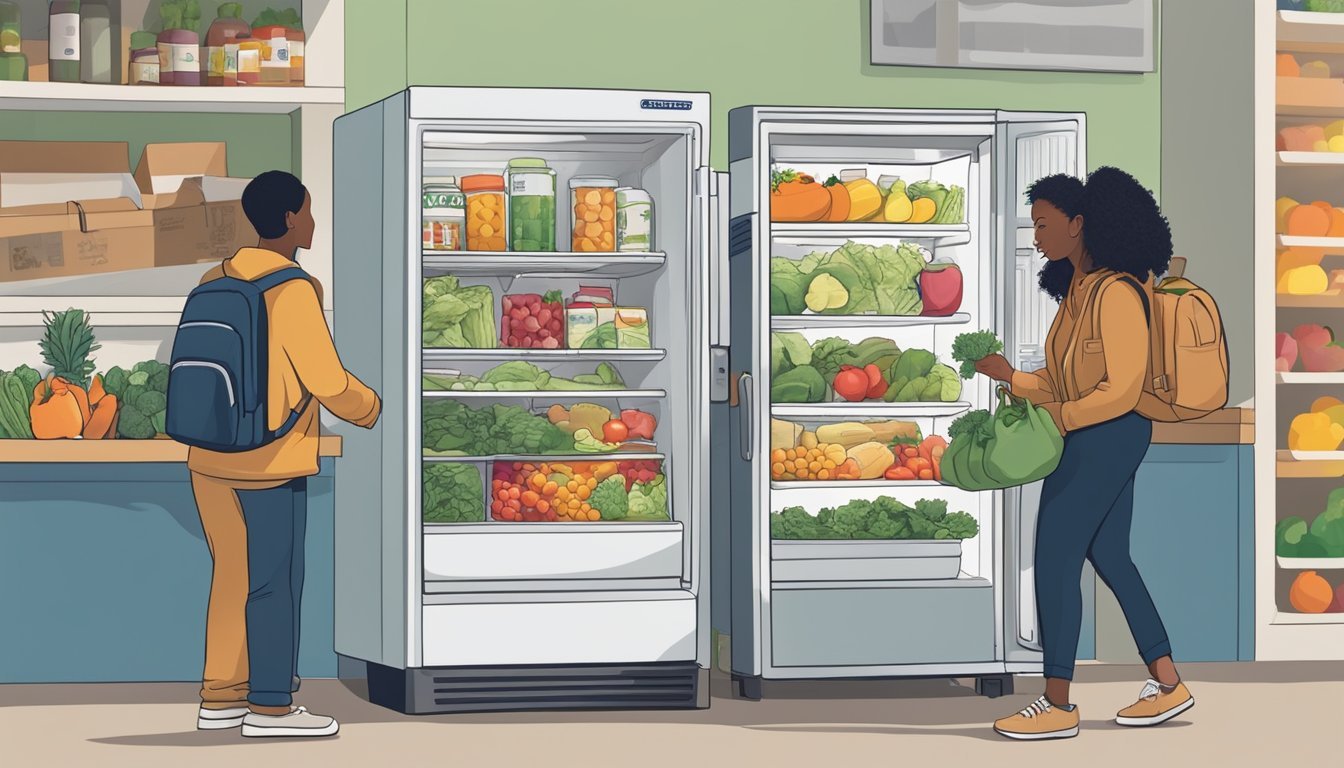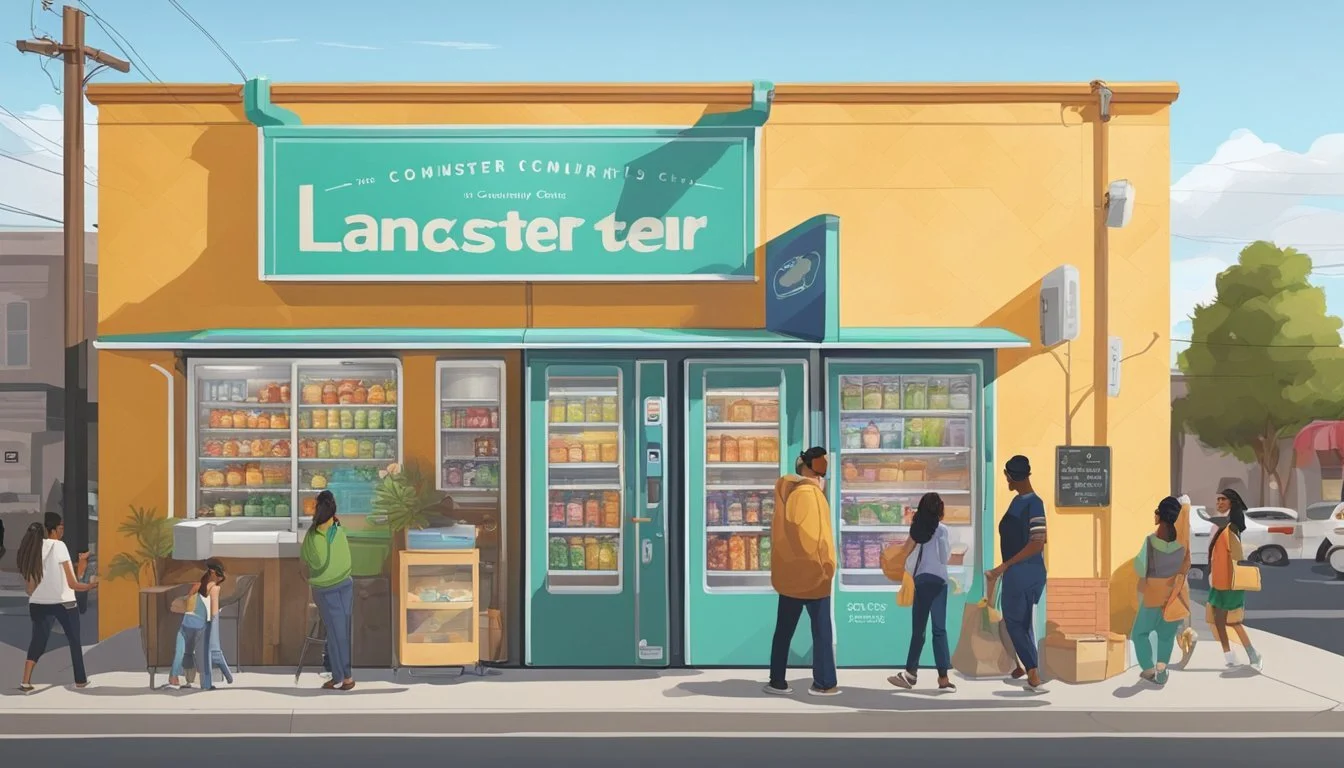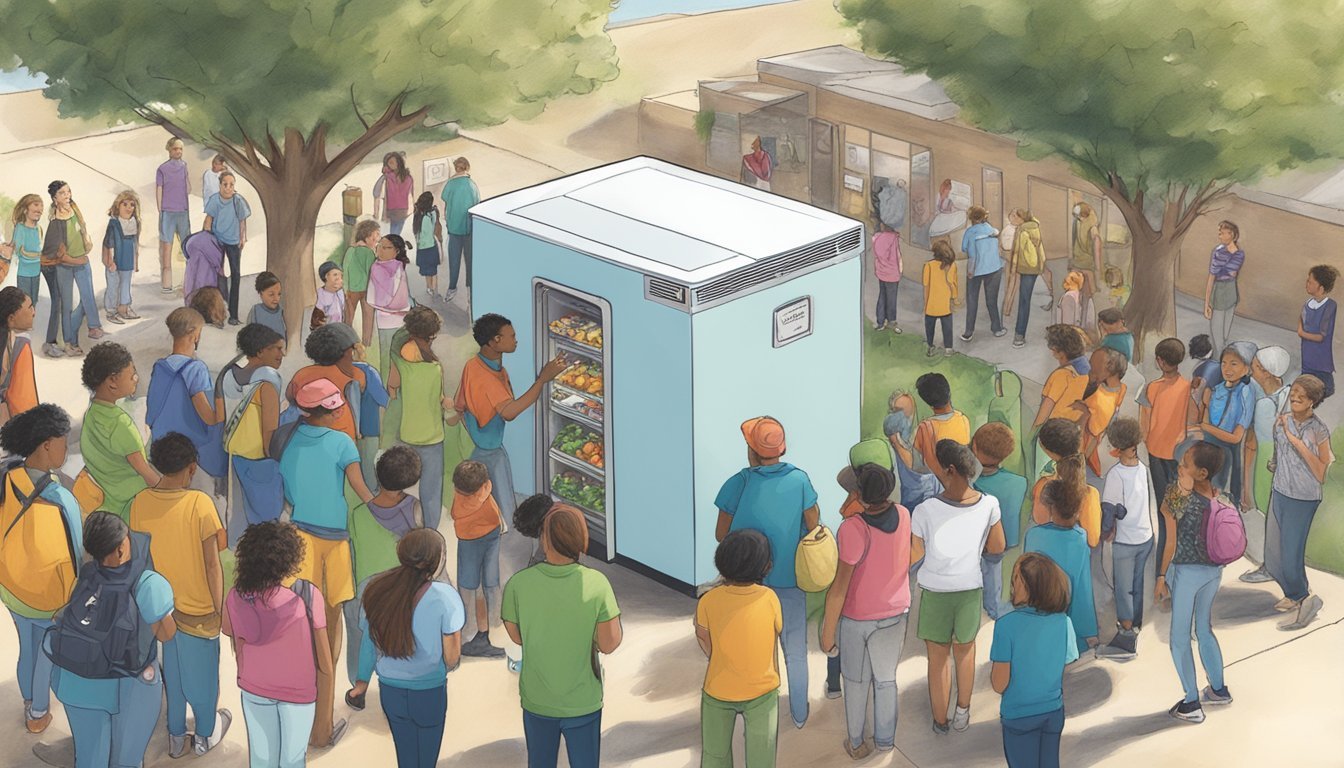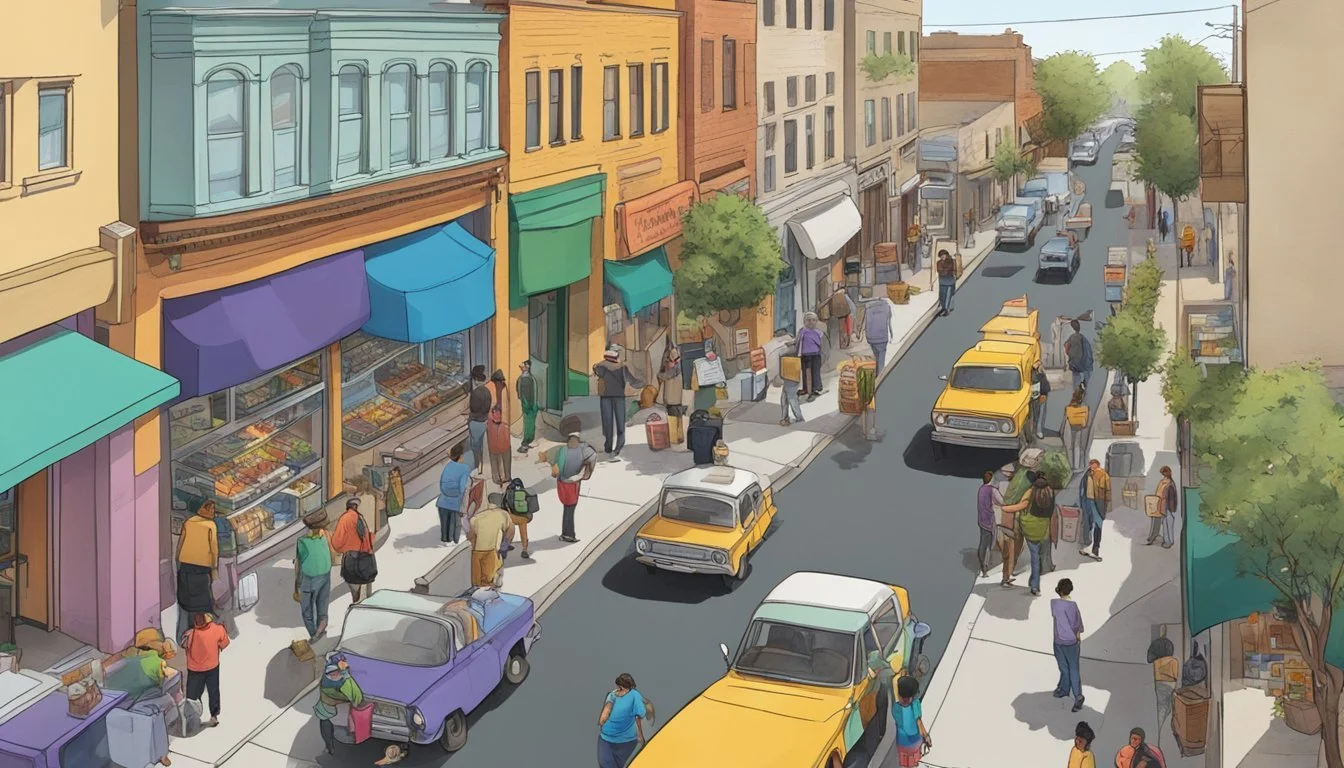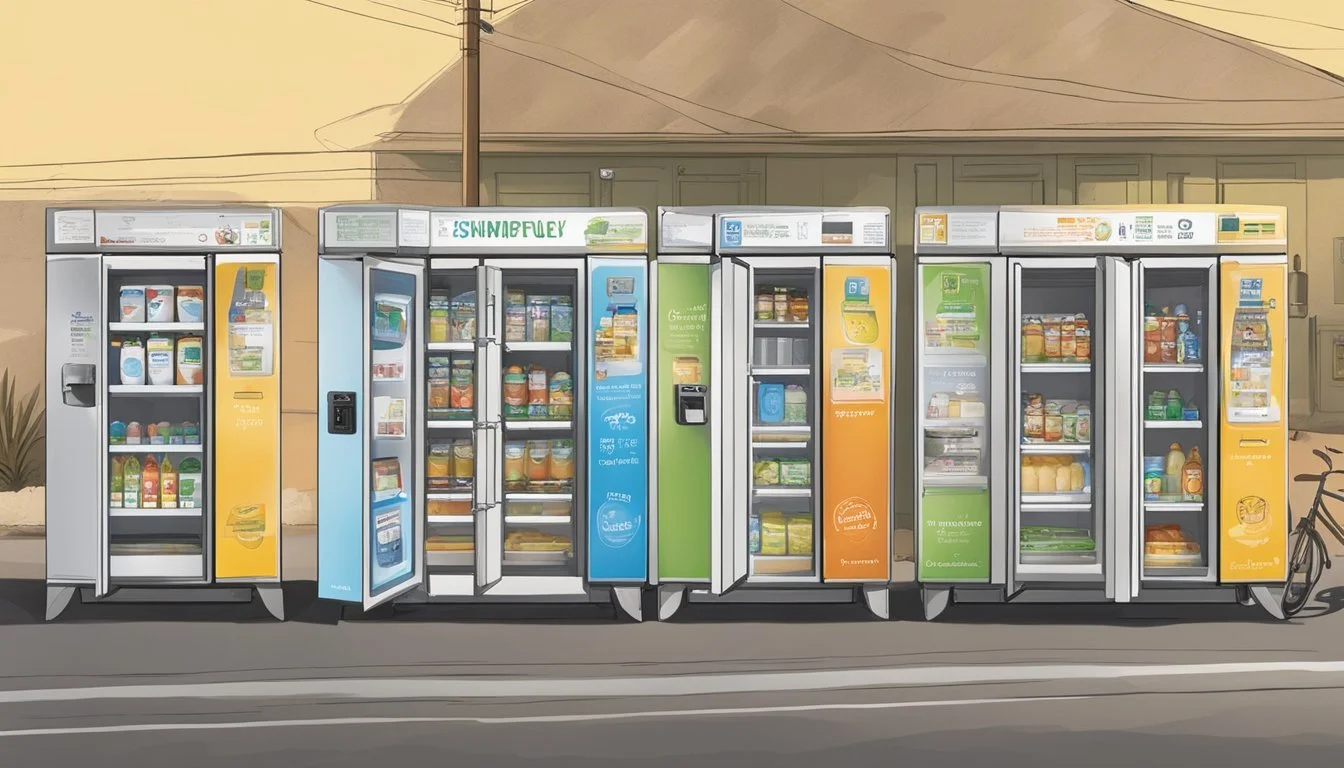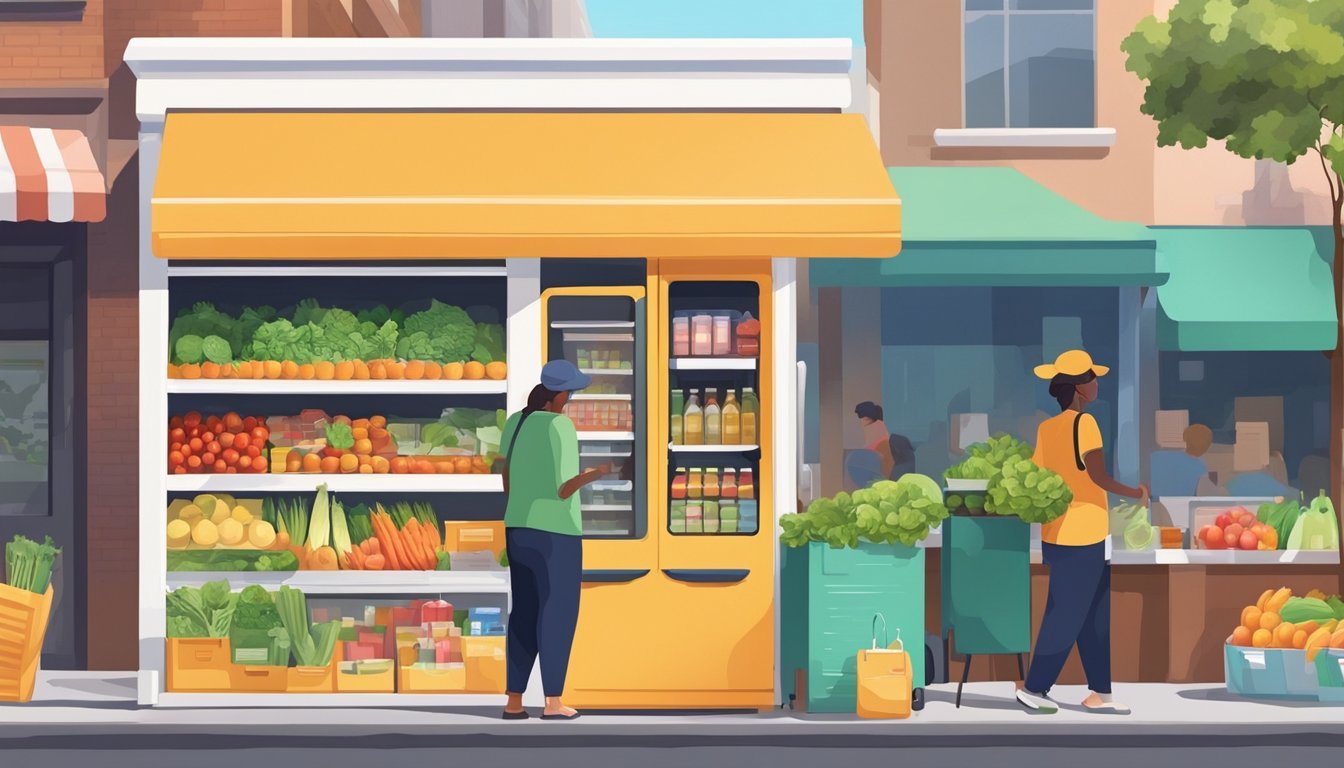Lancaster, CA Community Fridge
Tackling Hunger with Shared Resources
Community fridges have emerged as a practical approach to combat food insecurity and strengthen community ties. In Lancaster, California, the adoption of a community fridge program exemplifies a proactive step towards addressing these critical issues. These fridges offer a place where residents can share surplus food, ensuring that edible items do not go to waste and are instead made available to those who might need them. This system of sharing not only reduces food waste but also helps to alleviate hunger within the community.
The Lancaster community fridge operates on the principles of mutual support and respect, allowing for anonymous donation and collection of food items. It serves as more than just a resource for free and nutritious food; it is a social hub that fosters a sense of solidarity among residents. By facilitating the exchange of food, the community fridge in Lancaster plays an integral role in building local networks and promoting a collaborative spirit.
Addressing food insecurity is a complex challenge that requires community-based solutions, and the Lancaster community fridge is a testament to the effectiveness of shared efforts. It showcases how a simple yet innovative approach can make a significant difference in the lives of many, reinforcing the notion that community care can be powerful in ensuring no resident goes hungry.
History and Purpose of Community Fridges
Community fridges are a grassroots solution to food waste and hunger, emblematic of a culture that values share and togetherness, especially evident during the pandemic.
Origin of Community Fridges
Community fridges, also known as 'freedges', are public refrigerators that serve as a means to combat food waste, while simultaneously addressing food insecurity within communities. The concept is grounded in the idea of sharing and togetherness, where residents and businesses contribute food, and those in need are free to take it. This initiative not only fosters a culture of sharing but also directly tackles the issue of food waste in urban environments.
Growth of Community Fridge Movement
The community fridge movement has seen substantial growth, particularly prompted by the pandemic. It has transformed into a widespread grassroots organization, where multiple fridges are installed in various locations. For example, as noted from a search result, the initiative in Los Angeles began with 14 locations and expanded to 25, illustrating the scalability and community embracement of this food-sharing model. Additionally, the movement has gained momentum and visibility, becoming a beacon of community support and a practical response to the dual challenges of hunger and food sustainability.
How Community Fridges Work
Community fridges in Lancaster, CA, like many others, operate on the principles of food sharing and community support. They provide an essential service by allowing individuals to donate food and others to take what they need.
Operating Principles
Community fridges are designed to be openly accessible to anyone in the community, often placed in public spaces. They operate on a "take what you need, leave what you can" philosophy. These refrigerators are stocked with donations – ranging from fresh produce to packaged goods. The donated food is available for free, with the aim of reducing food insecurity and minimizing food waste.
Maintaining Food Safety
To ensure the safety of the food, organizers often collaborate with the health department to develop and adhere to strict safety protocols. The fridges are routinely checked to ensure the food is within its use-by date and stored at safe temperatures. Any perishable items like meats and dairy products are monitored closely to prevent health risks.
Guidelines for maintaining food safety:
Check temperatures regularly
Date and label all donations
Remove expired or spoiled food immediately
Volunteer Coordination
Volunteers play a crucial role in the operation of community fridges. They may be tasked with a variety of responsibilities, such as cleaning the fridge, organizing food donations, and ensuring that food safety procedures are followed. Coordination is often facilitated by community groups or online platforms, where volunteers sign up for shifts or respond to needs as they arise.
Volunteer tasks include:
Monitoring food quality
Ensuring fridge cleanliness
Stocking and organizing donations
The success of a community fridge relies heavily on community involvement and the commitment of volunteers to maintain a safe and welcoming environment.
Lancaster's Approach to Community Support
Lancaster, CA, has developed a multi-faceted strategy to reinforce community support through targeted initiatives at the local level. These efforts focus on harnessing the city's unique cultural fabric, fostering partnerships, and empowering citizens via its community centers.
Integration with Local Culture
Lancaster's community centers act as hubs for local culture and support, reflecting the city's commitment to embracing and promoting its diverse heritage. At the heart of this effort are after-school enrichment programs, which cater to the educational needs of children while incorporating the rich tapestry of Lancaster's cultural identity. These programs often include workshops and events that celebrate the city's history and diversity, providing a space for community members to connect and learn from each other.
Partnerships and Collaboration
Strategic partnerships have been crucial in Lancaster’s approach to bolstering community services. Collaborations with local businesses like Little Amsterdam Coffee have offered community members additional resources, such as informal gathering spots to foster social interaction and community cohesion. Moreover, by partnering with non-profit organizations, the city can better address issues like homelessness through unified prevention services.
Key Partnerships:
Local businesses (e.g., Little Amsterdam Coffee)
Non-profit organizations (homelessness prevention)
Community volunteers
Lancaster Community Center Initiatives
The Lancaster Community Center serves as a foundation for a host of initiatives aimed at providing comprehensive support to residents. These initiatives include:
Community Homes: Designed to empower residents by offering local access to a variety of programs and services.
Homelessness Prevention: The city utilizes a comprehensive approach to aid individuals facing homelessness by providing critical support mechanisms.
Volunteer-driven Events: Volunteers play an integral role in running community events that focus on issues like food insecurity, with community fridges playing a significant part in such efforts.
By assembling these diverse initiatives under the umbrella of its community centers, Lancaster, CA, aims to provide holistic support to enhance the well-being of its residents.
Community Fridge Locations and Accessibility
In Lancaster, California, community fridges serve as pivotal resources in reducing food waste and enhancing food security. They provide accessible points for food sharing within the community.
Mapping Lancaster's Fridges
Lancaster's contribution to the network of community fridges in Los Angeles County includes a location that may not be featured on all interactive maps but is significant for residents seeking to either contribute or access food. For precise locations within Lancaster, individuals ought to consult updated sources or directly contact local organizations involved with the community fridge initiatives.
Known Fridge Locations in Lancaster, CA:
L.A. Community Fridge – Lancaster Location
The exact address may vary, and residents are encouraged to verify through local websites or community boards.
Additional locations throughout Los Angeles County include areas like Compton, Highland Park, and Mid City, showcasing a broad initiative to address food insecurity across the region. While not exhaustive, these locations are typically updated on platforms dedicated to community fridge mapping.
Accessibility Considerations
Community fridges in Lancaster prioritize ease of access. They typically operate for extended hours and are situated in public spaces, such as the Garden Cafe at Baseline Studios, previously mentioned. Accessibility goes beyond physical reach; it encompasses the ease with which residents can locate, use, and contribute to these fridges. Efforts are made to ensure:
Extended Hours of Operation: Aimed to accommodate varying schedules, many fridges operate from early morning to evening.
Ease of Use: Fridge use does not require formal registration, enabling all community members to participate anonymously.
Accessibility Highlights:
Operating Hours: Often range from 8am to 6pm, but can vary.
Participation: No sign-up necessary; anonymous access to accommodate individual privacy.
These community-driven efforts rely on volunteers and partnerships, and thus, operational details like timings and location can change. Residents are encouraged to keep abreast of the latest information through local community networks and social media platforms to ensure they can benefit from and contribute to these shared resources.
Community Engagement and Education
In Lancaster, California, the Community Fridge initiative thrives on active community engagement and education to promote sustainability and local culture.
Promotion and Awareness
To raise awareness about the Community Fridge, organizers harness a variety of platforms like Instagram, ensuring the message of sharing resources resonates within the Lancaster community and neighboring cities like Los Angeles and Long Beach. The initiative's visibility in social media circles fosters a broader cultural appreciation for community-led efforts and encourages frequent participation and donations.
Social Media Channels:
Instagram: Regular updates on fridge contents and needs
Facebook: Community success stories and event promotions
Educational Resources and Workshops
Lancaster's Community Fridge doesn't simply provide resources; it also imparts knowledge. The city's community homes often double as educational hubs, offering workshops and resources aimed at teaching sustainable living practices. They feature facilities such as a computer lab and makerspace which enable the creation and dissemination of educational materials.
Educational Initiatives:
Computer Lab: Access to nutritional information and food safety guidelines
Makerspace: Workshops on preserving food and reducing waste
These facilities and programs help embed the values of the Community Fridge within the daily lives of residents, promoting a culture of sharing and continuous learning.
Impact of Community Fridges During Crises
Community Fridges in Lancaster, CA have served as critical resources in addressing food insecurity heightened by the coronavirus pandemic, illustrating a powerful model of community solidarity.
Response to Food Insecurity During Pandemic
During the coronavirus pandemic, Community Fridges emerged as a lifeline for many residents in Lancaster, CA. The Friendly Fridge BX, an example from another region, shows how such initiatives can thrive and be replicated. In Lancaster, as part of a broad grassroots movement, community fridges became more than just food dispensing points; they were a direct response to the acute need exacerbated by the pandemic. As food insecurity spiked due to job losses and economic hardships, these fridges offered uninterrupted access to free and nutritious food for those in need. They became especially crucial when traditional emergency food systems struggled to cope with the overwhelming demand.
Pre-Pandemic: Community fridges were in place but in much smaller numbers.
During Pandemic: An explosion in community fridge initiatives as a response to increasing food insecurity.
Key Figures: The number of people relying on such mutual aid initiatives for sustenance often mirrored the rise in unemployment rates.
Community Solidarity and Mutual Aid
The rise of community fridges in Lancaster is a testament to the strength of community solidarity and the ethos of mutual aid. These fridges are not only a place where people can access free food, but they also serve as hubs for community engagement and supporting one another in times of crisis. They reflect a shift in how communities come together to provide for one another, moving away from traditional charitable models towards more sustainable, grassroots-led solutions. By enabling residents to donate and take what they need, this system promotes an environment of trust and reciprocal support, reinforcing the idea that everyone has a role to play in combating the challenges brought on by the coronavirus.
Community Involvement: Residents actively participate in maintaining and stocking fridges.
Sustainable Support: The initiative encourages continuous involvement rather than one-time aid.
Mutual Aid Principles: Community fridges operate on the belief that helping each other is both a collective responsibility and benefit.
Sustainability and Future Prospects
In Lancaster, California, sustainability efforts are seeing a boost through innovations in food distribution. Community fridges are playing a pivotal role in this domain, addressing food waste while contributing to a greener future.
Reducing Food Waste
Community refrigerators, or "freedges," offer a tangible solution to the problem of food waste in the city of Lancaster. These grassroots initiatives allow residents to leave excess food in a shared fridge where others can take what they need, free of charge. Kensington Campus, among others, has adopted this approach, which has proven effective in other cities like New York. By minimizing waste, these fridges do more than just feed those in need; they contribute to a broader sustainable agenda that benefits the entire community.
Key Benefits to Reducing Food Waste with Community Fridges:
Food Accessibility: Increases availability of fresh produce and perishables to those in need, reducing food insecurity.
Environmental Impact: Minimizes the amount of food sent to landfills, reducing greenhouse gas emissions.
Expanding the Network of Community Fridges
The city's vision for the future includes expanding the network of community fridges to foster a more sustainable Lancaster. Initiatives like Freedge are setting the stage for a wider rollout, aiming to integrate sustainability seamlessly into the city's fabric. The expansion is driven by a collective effort, with organizations and individuals alike playing a part in the active dissemination of these "freedges" across the community.
Strategies for Expansion:
Community Involvement: Encouraging local businesses and residents to sponsor and maintain additional fridge locations.
Partnerships: Forming alliances with sustainability leaders and organizations, such as Vega, to utilize expertise in scaling the network while maintaining effectiveness.
Legal and Regulatory Considerations
When setting up a community fridge in Lancaster, CA, organizers must navigate a series of legal and regulatory hurdles to ensure the project operates within the bounds of local laws.
Permits and Regulations
Community fridges are subject to health and safety regulations, especially those enforced by the Los Angeles County Health Department. Organizers must obtain the necessary permits to distribute food publicly. They should ensure that:
The fridge is regularly cleaned and maintained to meet health standards.
The food stored is fresh and properly handled to prevent foodborne illnesses.
Failure to comply with these regulations could result in the fridge being shut down by local authorities.
Community Refrigerator Legal Framework
In the absence of a formal legal entity, such as a corporation, the individuals behind the fridge could be held personally liable for any issues that arise. In Los Angeles County, as with many jurisdictions, a legal framework provides guidelines on how community fridges can operate legally and safely. This includes:
Requirements Details Incorporation Optional, but provides legal protection for organizers. Food Safety Compliance with the health department's safety requirements. Public Accessibility Ensuring the fridge is accessible without violating local laws. Liability Protection Considering insurance to protect volunteers and organizers.
Adhering to these regulations is crucial for the continued operation of Lancaster’s community fridges.
How to Get Involved
Community involvement is pivotal to the success of the Lancaster, CA Community Fridge initiatives. By donating, volunteering, or helping to establish a fridge, individuals can contribute to a growing grassroots movement that combats food insecurity and strengthens the community fabric.
Donating to Community Fridges
To support community fridges in Lancaster, individuals may contribute food or funds. The fridges rely on donations from community members, which can be dropped off directly at the fridge locations. Preferred items for donation usually include:
Non-perishable goods: such as canned vegetables, rice, and pasta.
Fresh produce: fruits and vegetables that are uncut and in good condition.
Sealed packaged items: to ensure food safety.
Monetary donations are often channeled towards maintenance and operations, including electricity costs, which can approximate $150 yearly in some networks like Atlanta's.
Volunteer Opportunities
Volunteer efforts are instrumental to the maintenance and operation of community fridges. Those interested in volunteering with the City of Lancaster can reach out via email or phone to coordinate with local organizers like Jessica Lieber. Tasks for volunteers may include:
Food distribution: assisting in organizing and distributing donated items.
Fridge cleaning and maintenance: ensuring the fridges remain clean and functional.
Community outreach: raising awareness about the fridge and educating about food security.
Starting a Community Fridge
Individuals or organizations looking to start a new community fridge can tap into established resources. The Freedge movement provides guidance, and partnership opportunities may emerge for synergistic efforts with groups like Li'l Mid City Fridge. Initiators will need to consider:
Location: selecting accessible and safe places for the fridge.
Electricity: managing ongoing costs such as power supply.
Community engagement: fostering a local network to support the fridge.
These targeted actions facilitate the availability of free food for those in need and promote a culture of sharing.


